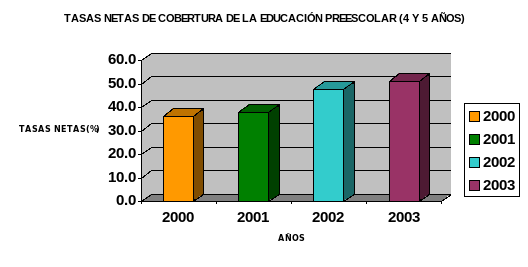school name physical activity policy use this template to create your own physical activity policy. * write over the pl
Use this template to create your own physical activity policy.
*
Write over the
your school
*
Answer the questions or follow the guidance in italics
*
Read through the other information decide whether it is relevant
for your school, delete if irrelevant and add your own ideas to
complete the full picture
Remember that a physical activity policy should provide a concise
outline of a school’s commitment to physical activity and guidance on
the responsibilities of each member of the whole school community.
Several people will need to be involved in writing this policy.
Date
Date to be reviewed (ideally every two years, no longer than 3 years)
Aims
As a Healthy School we want to promote the health and wellbeing of the
whole school community through increasing awareness and enjoyment of
and participation in physical activities. We are aware of our role,
alongside parents and carers, in supporting children to meet the
national physical activity guidelines:
*
All children and young people should engage in moderate to
vigorous intensity physical activity for at least 60 minutes and
up to several hours every day.
*
Vigorous intensity activities, including those that strengthen
muscle and bone, should be incorporated at least three days a
week.
*
All children and young people should minimise the amount of time
spent being sedentary (sitting) for extended periods.
https://www.gov.uk/government/uploads/system/uploads/attachment_data/file/213739/dh_128144.pdf
Responsibility for physical activity in school
overseeing that the policy is implemented
Physical activity and the school community
Pupils
*
Briefly describe how pupils are involved in decision making
related to physical activity, for example in deciding on school
clubs, playground equipment, or evaluation of PE lessons
*
Briefly describe how pupils are involved in the delivery of
physical activities? for example, are any of your year 5/6 pupils
Islington Active Leaders? Do (with supervision) they help to
organise physical activities at break of lunch times? Do they help
lead and organise peers during whole school activity days?
Staff
*
Staff should be aware of the policy and understand their role
within it.
*
Consider how staff are role models concerning physical activity
and how this is supported (e.g. travel to school / car parking /
bicycles / involvement in sporting activities)
*
What training and support is available to staff? Consider teaching
and learning in PE, playground activities, road safety.
*
Teaching responsibilities (for PE and related health and fitness;
also aspects of fitness and health within other subjects e.g. PSHE
education; science)
Parents
*
How are parents involved in physical activities? Consider
invitations to sporting events, organised family fun runs,
workshops for parents on physical activity, supporting active
travel, whether they volunteer to lead activities (for example in
after school clubs)
*
How are parents informed about the importance and benefit of
physical activity and opportunities for physical activity within
school and in the local community?
Governors
*
Is there a governor with oversight of physical activity? Could be
linked to oversight of all aspects of a Healthy School
*
Are PE successes and progress highlighted in the governors reports
to parents?
External providers
*
List the organisations you work with and the activities that they
provide
*
Do you work with the Islington School PE and Sport team?
*
Have you achieved the Schools Games Mark?
Primary Schools
*
Is your school compliant with the DfE’s PE and Sport Premium
conditions of grant?
*
Does your school website include a full break down of how the
premium is being spent?
*
What evidence do you provide on your website to illustrate the
impact of your premium spending on pupils’ PE and sport
participation and attainment in PE? Do you have examples of
physical activity successes in your annual impact report?
*
Are your school’s governors fully aware of the PE and Sport
Premium spending plan and do they have measures in place to
scrutinise the effectiveness of the spending and hold senior
leaders to account?
PE in school
We believe that physical education can provide unique opportunities
for pupils to enjoy physical activity, develop physical skills, learn
about healthy lifestyles and develop personal qualities such as
self-confidence, cooperation, communication and fair-play.
*
How much time and how many lessons of PE are included within the
timetable for each year group? (it is expected that every pupil
has access to at least two hours PE within the curriculum)
*
How is the curriculum organised to ensure that all pupils (unless
they have a special educational need) attain the minimum expected
“floor standards” of the PE national curriculum
*
How are disabled pupils integrated in PE lessons and how are they
assessed?
*
How is pupil’s PE attainment assessed, recorded and reported to
parents (including how many pupils are able to swim 25m and self
rescue by the end of year 6)?
*
How are pupils who cannot take part physically in a PE lesson
integrated in the learning?
*
What happens if pupils forget their kit?
*
Do you engage in inter-school competitions?
Health and Safety
*
Either refer to separate procedures (e.g. Association for physical
Education (AfPE) handbook: Safe Practice in PE Physical Activity
and School Sport) or describe below, for example:
The school recognises that physical activity involves pupils in
activities which by their very nature, contain an element of risk.
Staff manage this risk by:
*
being familiar with safe practices for moving and using apparatus
*
being aware of pupils who have special needs with regards to
physical activity, e.g. asthma
*
ensuring pupils wear appropriate clothing for the activity, remove
any jewellery and tie long hair back
*
being aware of the correct procedures for the development of
specific skills being taught,
*
ensuring that apparatus and equipment are stored safely at the end
of each lesson
*
encouraging pupils to consider their own safety and the safety of
others at all times
It is a general requirement that we undertake an annual risk
assessment of the school premises and equipment
Supporting physical activity in all aspects of school life
Out of school hours learning
*
Describe what is available, whether before or after school, target
pupils (different age groups, boys or girls only, mixed) any
charge
*
How is attendance monitored? Is there good take-up? Any groups who
are under-represented in attending clubs? Any actions to encourage
attendance?
*
What provision is made for the less active pupils? Do you have
targeted physical activity sessions for your less active pupils?
*
Who runs activities?
*
How are they funded?
Active travel
*
How do you encourage pupils (and their parents / carers) to walk,
cycle or scoot to school?
*
If you have younger children how do you work with parents to
discourage them from using buggies?
*
Do you know the proportion of pupils that travel by car? Is it an
issue for your school?
*
Do you have a school travel plan?
*
How is active travel encouraged during school activities and
trips?
*
How do you support pupils to develop road safety skills? (Do you
provide Bikeability courses for your pupils?)
Competitions
*
Do your pupils take part in inter/intra school competitions?
*
Do you take part in School Games competitions?
*
Do your pupils take part in inclusion festivals/competitions?
(e.g. Boccia?)
*
Do you involve your less sporty pupils in the festivals or
appropriate competitions (e.g. the orienteering, Moving and
Improving festival)?
Facilities available
*
What facilities do you use: include those on the school site as
well as those in the community? (swimming pool, park, leisure
centre)
Equal opportunities and inclusion
All pupils in the school, including those with special needs are
entitled to a comprehensive programme of physical activity which:
*
fulfils the statutory national curriculum requirements
*
takes into account their individual needs and interests
*
provides them with opportunities to pursue activity beyond the
school day
The school assists pupils with specific disabilities/health conditions
and provides effective learning opportunities where appropriate.
Activities are adapted to suit individual requirements as appropriate;
this may include modifying a task, offering a parallel or separate
activity.
The school is sensitive to the needs and skills of the individual and
physical activity provision is inclusive of all abilities and pupils
whether the pupils are physically gifted or challenged.
The playground and physical activity
*
What opportunities are there for pupils to be physically active at
break / play and lunch times?
*
How do staff encourage physical activity?
*
What equipment is available and how is it maintained?
Physical activity in the classroom
*
Do you encourage physically active ‘brain breaks’ to aid
concentration?
*
Do you do the Daily Mile to increase physical activity and improve
behaviour and concentration levels?
*
Do you teach about the social aspects of fitness within your PSHE
education programme?
4
PHYSICAL ACTIVITY Policy Template Dec 2017
 WYRAŻAM ZGODĘ NIE WYRAŻAM ZGODY NA UCZESTNICTWO MOJEGO
WYRAŻAM ZGODĘ NIE WYRAŻAM ZGODY NA UCZESTNICTWO MOJEGO 5 ASEM CONFERENCE ON PROMOTING ECONOMIC AND SOCIAL INCLUSION
5 ASEM CONFERENCE ON PROMOTING ECONOMIC AND SOCIAL INCLUSION ESTUDIO DE LA SITUACIÓN DE LA EDUCACIÓN INCLUSIVA EN
ESTUDIO DE LA SITUACIÓN DE LA EDUCACIÓN INCLUSIVA EN I E JOSÉ ROBERTO VÁSQUEZBARRIO MANRIQUE PREPARÉMONOS PARA
I E JOSÉ ROBERTO VÁSQUEZBARRIO MANRIQUE PREPARÉMONOS PARA s277-04_f
s277-04_f R E G I O N E S I
R E G I O N E S I CRPDCCHNCO1 UNITED NATIONS CRPDCCHNCO1 CONVENTION ON THE RIGHTS OF
CRPDCCHNCO1 UNITED NATIONS CRPDCCHNCO1 CONVENTION ON THE RIGHTS OF